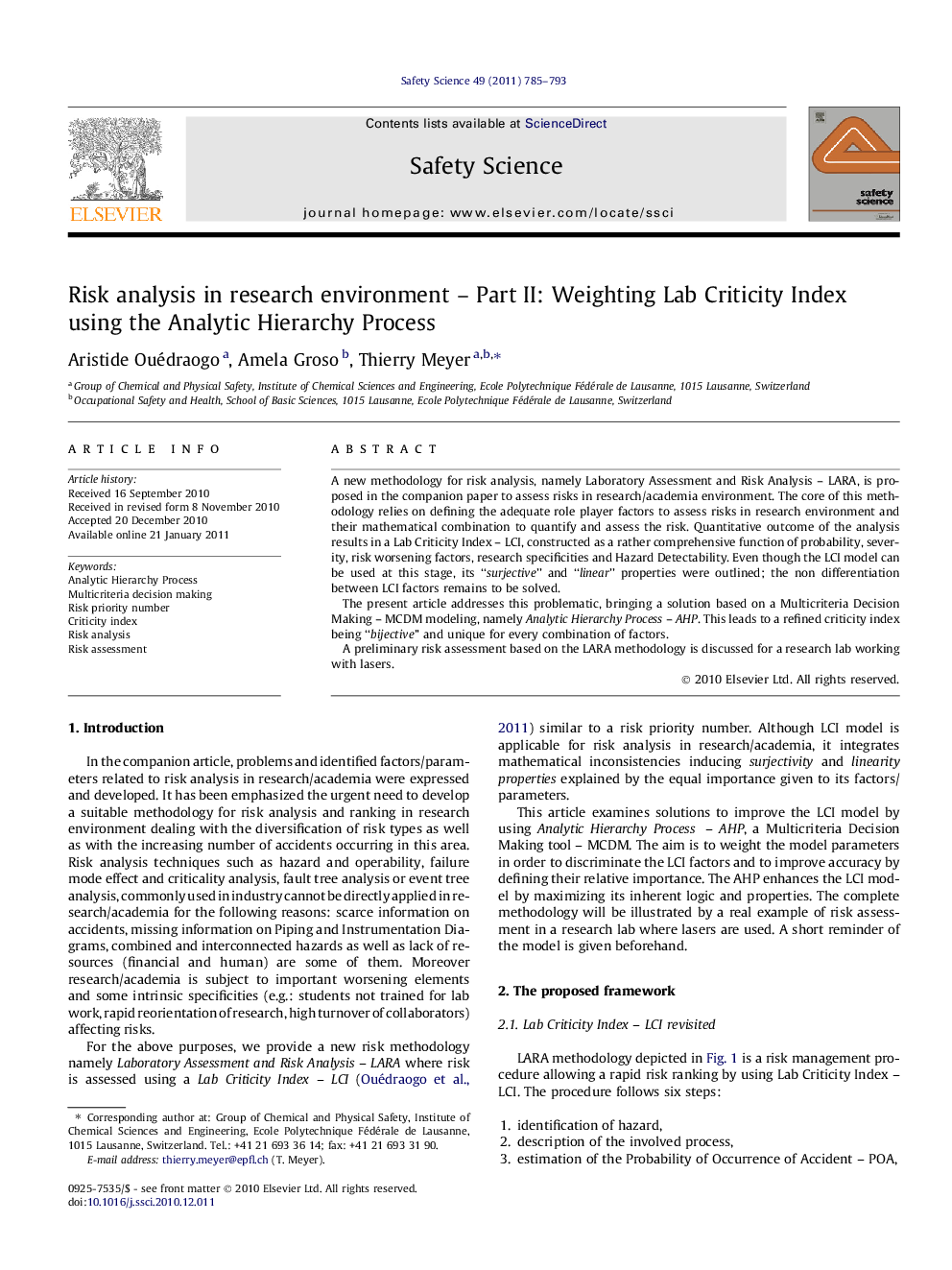| Article ID | Journal | Published Year | Pages | File Type |
|---|---|---|---|---|
| 589414 | Safety Science | 2011 | 9 Pages |
A new methodology for risk analysis, namely Laboratory Assessment and Risk Analysis – LARA, is proposed in the companion paper to assess risks in research/academia environment. The core of this methodology relies on defining the adequate role player factors to assess risks in research environment and their mathematical combination to quantify and assess the risk. Quantitative outcome of the analysis results in a Lab Criticity Index – LCI, constructed as a rather comprehensive function of probability, severity, risk worsening factors, research specificities and Hazard Detectability. Even though the LCI model can be used at this stage, its “surjective” and “linear” properties were outlined; the non differentiation between LCI factors remains to be solved.The present article addresses this problematic, bringing a solution based on a Multicriteria Decision Making – MCDM modeling, namely Analytic Hierarchy Process – AHP. This leads to a refined criticity index being “bijective” and unique for every combination of factors.A preliminary risk assessment based on the LARA methodology is discussed for a research lab working with lasers.
Research highlights► Analytic Hierarchy Process – AHP used to weight the parameters of the model developed for the Criticity Index (LCI). ► Example of real application of the developed Laboratory Assessment and Risk Analysis methodology (LARA) in a research laboratory working with lasers. ► Results shows that LARA/LCI model is easy to perform, saves resources and provides precious results for risk assessment and adequate decision making.
